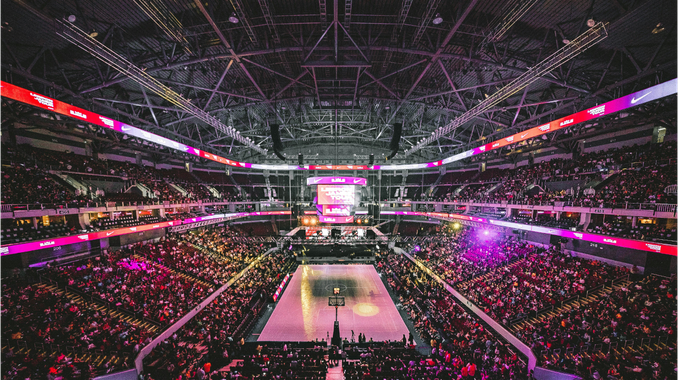Over the course of NASCAR’s history, the organization has been making strides to ensure a safe and regulated sport for both drivers and spectators alike. And while crashes and accidents are sometimes just part of the game, the changes around stock car rules and designs have been successful in lowering the rate of fatal accidents on the track. And that’s where the NASCAR Next Gen comes in.
For the last 75 years, there have been seven significant iterations of NASCAR stock cars, each with the latest advances in automotive engineering technology.
These advances in technology have been instrumental in allowing drivers to gain higher speeds, train harder and ultimately allow them to perform more safely and effectively during the race.
The manufacturers aren’t forgetting about the fans, either. In fact, each new iteration has been designed to provide the best possible spectating experience for fans both at the track and watching from home. And with the latest version, the NASCAR Next Gen car, the thrill of high-speed competition and the adrenaline rush of a close finish feels better than ever.
HISTORY OF NASCAR STOCK CARS
The original elite series of NASCAR wasn’t called the Cup Series, but the “Strictly Stock” Division. The name sounds just like what it means: racers drive a car like any other, with no special modifications. That is no longer the case, but interestingly enough, the Next Gen car kind of takes us full circle. But more on that in a moment.
First, let’s take a look at the evolution of NASCAR stock cars and stock car rules and regulations leading up to the Next Gen Race Car.
GENERATION 1: STRICTLY STOCK (1948-1966)
As mentioned above, the first NASCAR cars were at typical as you could get, with no modifications allowed. Strictly Stock didn’t last long in the grand scheme of the sport, as the need for speed became a bigger priority as time went on. But it was the beginning of what would become an ever-evolving journey to build the best cars in NASCAR history.
GENERATION 2 (1967-1980)
Generation 2 came after nearly two decades of racing strictly stock. The design of the vehicle was made specifically to handle superspeedways, a new kind of NASCAR track (think Daytona or Talledega). Teams could adjust the chassis of the car but had to leave the frame as stock.
GENERATION 3 (1981-1991)
By Generation 3, NASCAR drivers and authorities were ready to leave stock behind in favor of the race cars we picture today, like those of Le Mans. Generation 3 had a smaller wheelbase (110 inches), but also featured bigger spoilers to help reduce drag, lift and turbulence, allowing the drivers to reach higher speeds without all the risk.
GENERATION 4 (1992-2006)
Apart from Gen 1, the Generation 4 car was used officially by NASCAR for the longest amount of time, approximately 15 years.
This next iteration of race car was like a whole new world: Gen 4 took the stock out of stock car racing. Vehicle bodies previously made of steel were replaced with fiberglass due to the light weight of the material, and roof flaps were added to keep these aerodynamic cars from lifting off the ground. This is the point in which aerodynamics and physics became a more integral part of designing these race cars.
GENERATION 5 (2007-2012)
Generation 5 may not have been on the track for as long as some other generations, but that doesn’t mean it didn’t push the sport forward. Rather, the car has been referred to as the “Car of Tomorrow,” and included some of the biggest safety modifications of any generation.
This came after a number of fatal accidents, including the crash that took Dale Earnhardt’s life. This car was slightly larger than its predecessor, and had an adjustable splitter added to the bottom front of the car to produce downforce.
GENERATION 6 (2013-2021)
After all the changes in Gen 5, NASCAR wanted to go back to their roots, and modeled Generation 6 to better resemble the stock cars on the showroom floor, like they used to back in the day. Along with the aesthetic redesigns, NASCAR implemented new safety enhancements like forward roof bars and larger roof flaps to prevent cars from flipping.
GENERATION 7 AKA NEXT GEN (2022-)
And starting in the 2022 season – after many delays due to the COVID-19 pandemic – NASCAR’s Cup Series Next Gen car was ready to ride. Originally going to be released for the 2021 season, Next Gen testing began toward the end of 2019, with Richard Childress Racing Team building the first Next Gen prototype. In the fall of 2019, racer Austin Dillon took to the track to test the new racecar.
Three more tests were conducted by Joey Logano, Erik Jones and William Byron before the pandemic postponed the 2020 season. It wasn’t until August of 2020 that testing and data collection resumed.
Next Gen, the newest series of cars, was showcased for the first time at the Park Expo in North Carolina on May 5, 2021.
The event was especially memorable for car racing fans as the top drivers for the NASCAR Cup Series, Chase Elliot (Chevrolet Camaro ZL1), Joey Logano (Ford Mustang GT) and Denny Hamlin (Toyota Camry TRD) were present to debut the three brands of Next Gen cars.
NEXT GEN CAR SPECS
Three of the biggest goals that came with the Next Gen car were improved safety, reduced manufacturing costs and a more recognizable design.
Some of the changes of the Next Gen cars are:
Chassis: The chassis is still made from steel but is designed to be modular in order for the front and rear clips to bolt to the center section and be used interchangeably. This was done to improve repair times and convenience for the pit crew.
External Body: These cars look much more like their manufacturer’s typical style, but still have to be symmetrical and comply with other aerodynamic requirements. The bottom of the car also features a new, flat carbon-fiber “undertray” to reduce drag and create smoother airflow through the rear diffuser.
Transmission: Gen 7 takes out the traditional 4-speed transmission in favor of a 5-speed Xtrac Limited sequential manual transmission. This change makes the new design more similar to the transmission of other cars in motor sports.
Independent Rear Suspension: Another change that makes the cars more similar to other racing vehicles is the replacement of the solid rear axle with an independent rear suspension with adjustable TTR dampers.
Along with the changes above, there were also adjustments to the wheels, mirrors and other aspects of the Next Gen car.
NEXT GEN CAR IN THE NASCAR CUP SERIES
The introduction of the Next Gen Cup car into the NASCAR Cup Series wasn’t without its problems. In the 2022 season, a number of drivers lost laps due to tire malfunctions, while others failed inspection due to heat expansion.
NASCAR drivers like Denny Hamlin (as seen in the video below), Corey Lajoie and Logano spoke up about safety concerns including painful crashes, especially from behind, cars catching on fire, engine failure, concussions and more. And for drivers like Kurt Busch, these concerns became a reality; he was forced to retire in 2022 due to the brain injury he suffered during a qualifying race at Pocono Raceway while driving a Next Gen car.
As these concerns became reality, NASCAR announced changes to the design for the 2023 season. The main changes were to the rear of the car, including bumper redesigns and changes to the center and rear chassis clips. But as Hamlin explains, change must be constant, and there is still lots of work to do.
This video explains additional changes being made after a crash between Kyle Larson and Ryan Preece earlier in the 2023 season.
FINAL THOUGHTS
NASCAR has been one of the most entertaining, exhilarating and exciting sports since its inception 75-years ago, but it is also one of the most dangerous. 28 fatal racing accidents have occurred in NASCAR history, with the last being the death of Dale Earnhardt in 2001.
Since then, NASCAR officials have had to adjust priorities to keep drivers safe, above all else. And while the Next Gen car certainly isn’t perfect, it’s promising to see NASCAR drivers and executives taking safety seriously and reworking their designs to do so.
To see the Next Gen cars in action, tune into a NASCAR Cup Series race every weekend of the season. From February to November, DIRECTV customers can watch every NASCAR Cup Series race with their subscription.
Plus, you can catch commentary, analysis and more with DIRECTV’s CHOICE™ Package, perfect for sports lovers.
![]()
Frequently Asked Questions
How many versions of NASCAR race cars have there been?
Between 1948 and 2023, there have been seven distinct iterations of NASCAR cars, with the latest being the Next Gen car.
The content is featured on https://www.directv.com/insider/ is editorial content brought to you by DIRECTV. While some of the programming discussed may now or in the future be available affiliates distribution services, the companies and persons discussed and depicted, and the authors and publishers of licensed content, are not necessarily associated with and do not necessarily endorse DIRECTV. When you click on ads on this site you may be taken to DIRECTV marketing pages that display advertising content. Content sponsored or co-created by programmers is identified as "Sponsored Content" or "Promoted Content."






